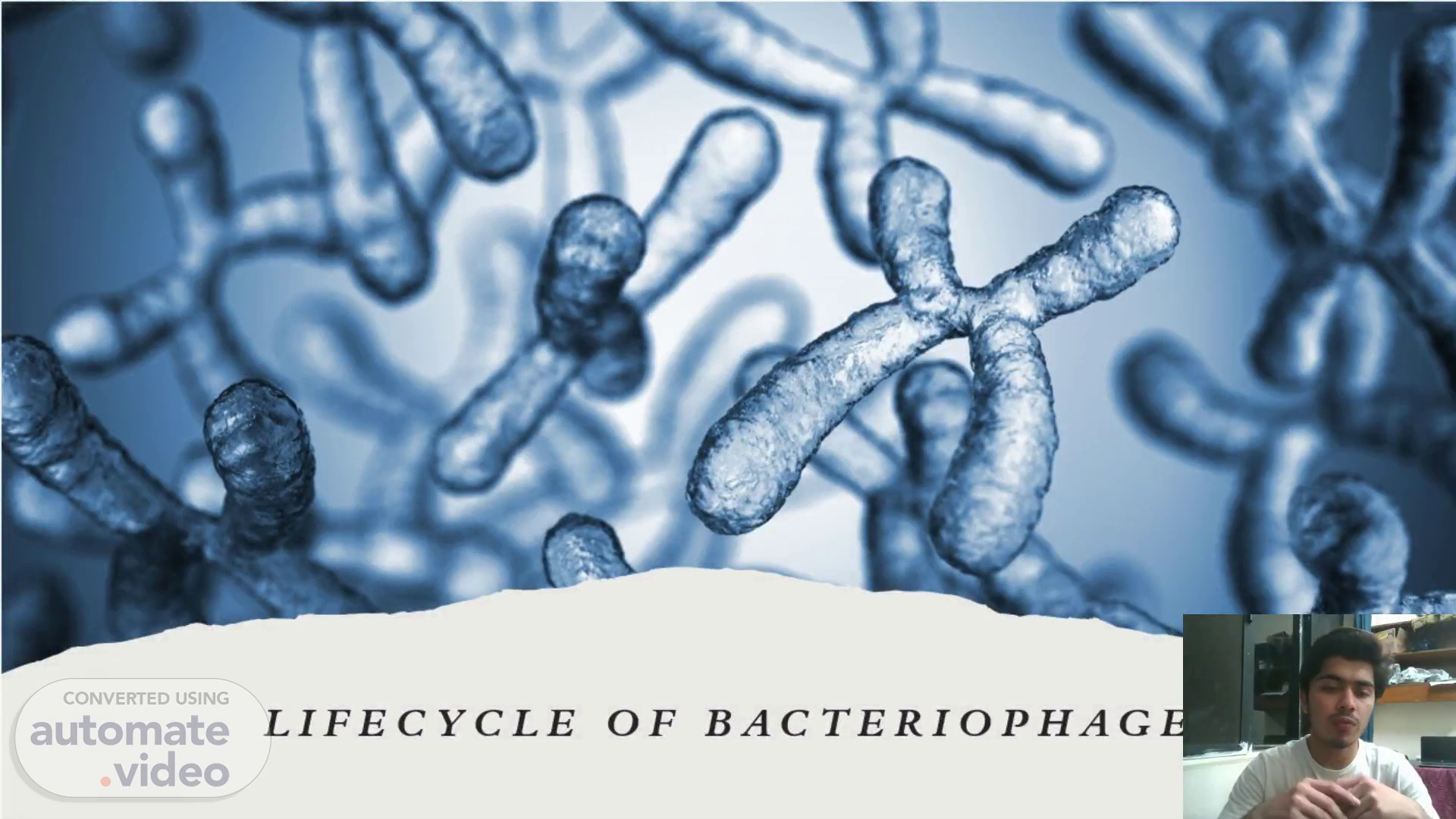
Lifecycle of Bacteriophage
Scene 1 (0s)
Lifecycle of Bacteriophage. abstract.
Scene 2 (8s)
. Structure Of Bacteriophage. Tadpole Double stranded DNA molecule Phage tail is more complex On one side of the sheath is collar and other is base plate Six tail fibers The volume of phage is 1/1000 of the host..
Scene 3 (1m 20s)
. Replication Of Bacteriophage. Attachment/Adsorption to host cell at receptor site Penetration Tail releases the enzymes lysozymes to dissolve a portion of the bacterial cell wall and cell membrane. Tail sheath contracts and tail core is forced into the cell through cell wall and cell membrane. Virus injects its DNA into the cell. Protein Coat (Head and tail) remains outside the cell. Phage Replication Birth of new phage.
Scene 4 (2m 38s)
. Lifecycles. Control of the Host cell. Multiplication. About 25 min after initial infection, approximately 200 new bacteriophages are formed. Bacteriophage replicates by either of Lytic cycle or lysogenic cycle . Cell bursts- Lysis Virulent/Lytic Phage -Phage which causes lysis of host cell. All infections of bacterial cells by phages do not result in lysis. Prophage-In some cases Viral DNA, instead of taking over the control of host’s and become this process is known as Lysogeny. Continue to live and reproduce. Viral DNA passes in Successive generations. Viral DNA gets detached from the host’s chromosome and lytic cycle starts- Induction. Temperate/Lysogenic Phage -Phage which causes lysogeny..
Scene 5 (4m 34s)
. Diagram Description automatically generated.